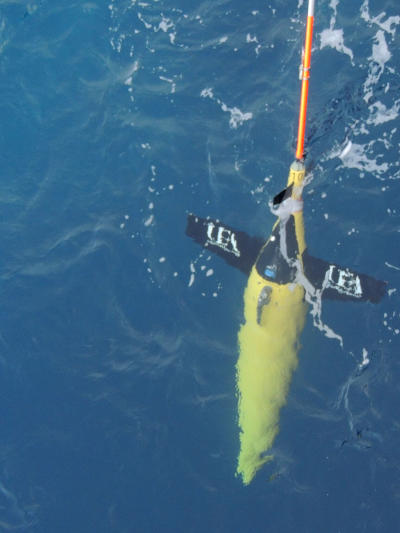Using AI to control energy for indoor agriculture
30 September 2024
Published online 14 May 2018
Marine scientists have discovered the world’s largest oxygen-depleted zone in the Gulf of Oman.

© University of East Anglia
Marine life needs ample oxygen to survive. And while oxygen minimum zones (OMZ) are not uncommon and naturally occur as a result of imbalance between atmospheric oxygen supply and decay of organic matter, the dearth of oxygen in the Gulf of Oman’s OMZ has been revealed to be ‘the most dramatic’ so far, according to a paper in Geophysical Research Letters1.
"This area of 80,000 square kilometers is now anoxic [or depleted of oxygen], extending the Arabian Sea’s oxygen minimum zone into its extremities where people live and fish," explains Bastien Queste from UEA’s School of Environmental Sciences and member of the research team, which included scientists from the University of East Anglia and Sultan Qaboos University. Tuna fishing, which is a huge industry off the Omani coast, is expected to be badly affected.
The existence of a large dead zone in the Arabian Sea was first documented in the 1960s, but many decades of geopolitical tensions and piracy have hindered attempts at collecting data.
The scientists negated these challenges by dispatching two untethered underwater robots to roam the bottom of the coastal waters for eight months and collect information.
Seagliders, the robots used, are roughly the size of a small human diver and can communicate via Iridium satellite once they reach the surface. They can cover distances of thousands of kilometers and plummet as deep as 1,000 meters below the surface.
“Our original project with Sultan Qaboos University was to map underwater patterns of bioluminescent algae in different seasons, and determine what caused them to bloom,” recalls Queste. In the course of that work, the team discovered how extremely low the oxygen levels in the area were, and investigated further.
According to Queste, the situation reflects changes in biochemical cycles and creates a scenario where bacteria have to respire nitrate instead of oxygen –– a process called denitrification. This produces nitrous oxide (N2O), a greenhouse gas with 300 times the atmospheric heat-trapping ability of CO2.
“The Arabian Sea has a strong monsoon-related upwelling,” explains John Burt, a marine biologist at NYU Abu Dhabi, who wasn’t involved in this study. “This brings nutrient-rich waters up towards the surface and underpins this plankton-bacteria engine that causes such a substantial oxygen minimum zone in this region.”
According to the scientists, this is not the worst of it. Increasing water temperature already reduces the amount of oxygen being injected into the ocean, says Queste. Bacteria need to respire more in warmer waters, consuming more oxygen.
To break this cycle, “we have to dramatically reduce, or even reverse, our ecological footprint,” says Queste, pointing out that managing agricultural run-offs and improving sewage treatment are also key to protect an already fragile marine environment.
doi:10.1038/nmiddleeast.2018.57
Stay connected: